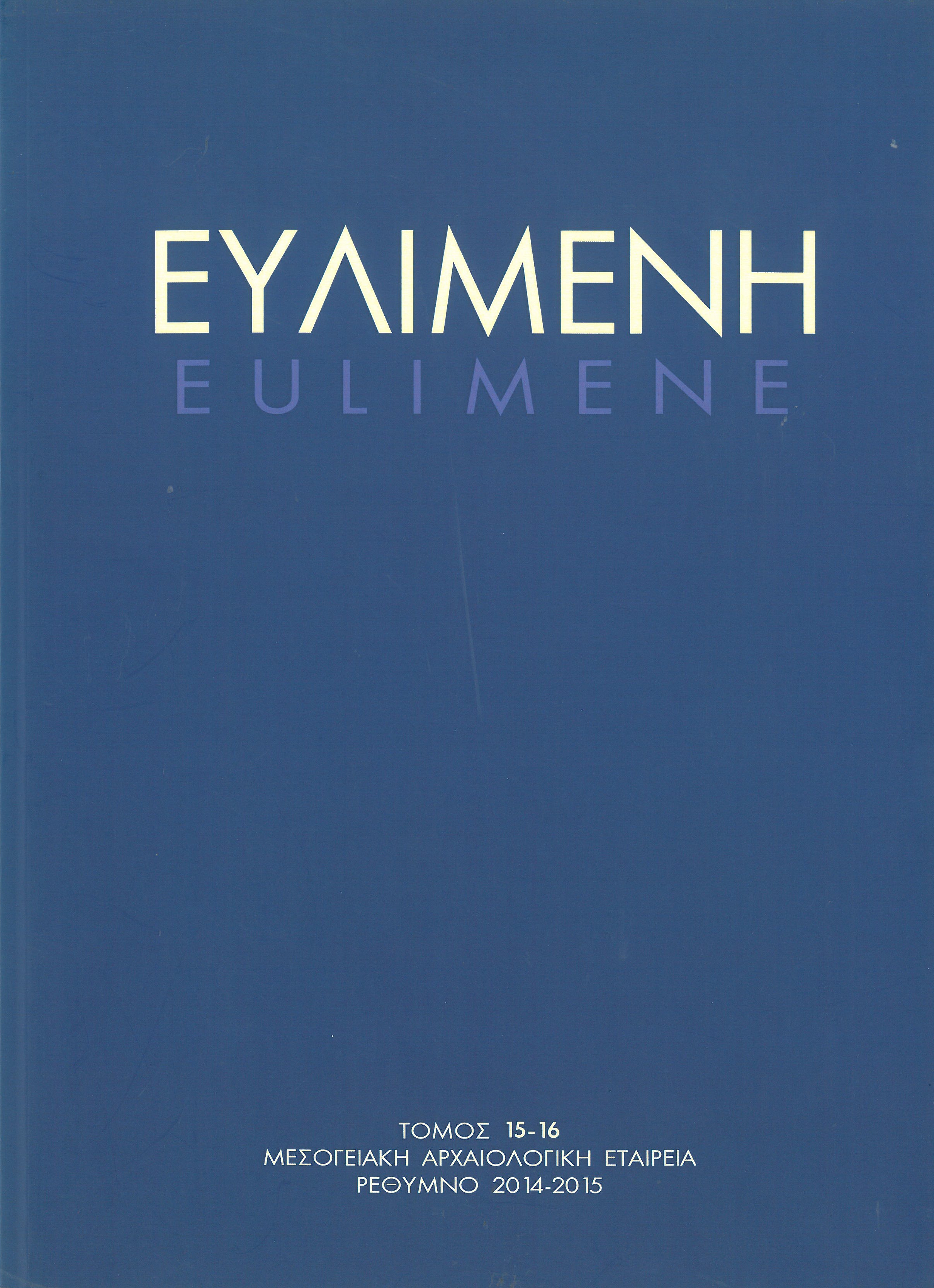A quarry-mark from ancient Thera

Abstract
Ένα λιθουργικό σήμα από την αρχαία Θήρα. Οι επαφές μεταξύ Κρήτης και Θήρας κατά την ανατολίζουσα και αρχαϊκή περίοδο, επιβεβαιωμένες από τον Ηρόδοτο, την κεραμική και τη γλυπτική, ενισχύονται επιπλέον από δύο «λιθουργικά σήματα» σε λατομεία των δύο νησιών. Ένα λατομικό σήμα στον τύπο του Παραθύρου ή της Πύλης είχε χαραχθεί σε λατομείο του 7ου αι. π.Χ. στο όρος Προφήτης Ηλίας στη Θήρα. Ο αρχαϊκός χαρακτήρας της θέσης σε συνδυασμό με την παντελή απουσία του τύπου του Παραθύρου στο σύνολο των λιθουργικών σημάτων του ΥΜ Ι οικισμού του Ακρωτηρίου, αποκλείουν την πιθανότητα μινωικής χρονολόγησης. Υπ’ αυτήν την έννοια, στην παρούσα εργασία υποστηρίζεται ο αρχαϊκός χαρακτήρας στο τμήμα του λατομείου «Στα Σκαριά» Παλαικάστρου Κρήτης, στο οποίο είναι χαραγμένο ένα λατομικό σήμα επίσης στον τύπο του Παραθύρου. Δεν είναι πρωτοφανής άλλωστε η επιβίωση συμβόλων της Εποχής του Χαλκού στην αρχαϊκή περίοδο. Αυτά τα λατομικά σήματα θα μπορούσαν να ερμηνευθούν ως ενδείξεις μιας κομπανίας χτιστών, οι οποίοι μετακινούνταν από μέρος σε μέρος κατά παραγγελία. Παράλληλα προσφέρονται από την Αθήνα του 4ου αι. π.Χ. αλλά και από τα «μπουλούκια» των παραδοσιακών χτιστών στην ηπειρωτική Ελλάδα από τον 18ο αιώνα έως τα μέσα της δεκαετίας του ’60. Μια πιθανή θαλάσσια διαδρομή μεταξύ της Θήρας του 7ου αι. π.Χ. και των ανατολικών ακτών της Κρήτης απηχείται στον Ηρόδοτο (4.151-152). Αρχαϊκά μαρμάρινα γλυπτά από τη Θήρα με επιρροές από την ανατολίζουσα γλυπτική της Κρήτης, θηραϊκή κεραμική στην Κρήτη σε θέσεις εγγύς κοιτασμάτων λευκού μαρμάρου, και οι εμπορικές επαφές της Θήρας με την Αξό, η επικράτεια της οποίας εμφανίζει μαρμαροφορία, συμπληρώνουν την εικόνα της κινητικότητας Κρητών γλυπτών και αρχιτεκτόνων κατά τον 7ο και 6ο αι. π.Χ.
Article Details
- Section
- Articles
- Categories
The copyright for articles in this journal is retained by the author(s), with first publication rights granted to the journal. Authors who submit articles to this journal confirm that third-party intellectual property rights are not violated in any way. By virtue of their appearance in this open access journal, articles can be used freely, with proper attribution, for educational and other non-commercial purposes. The Mediterranean Archaeological Society retains the right to publish papers that appear in EULIMENE in any form, including electronic, the journal may assume in the future. It also retains the right to deposit articles published in EULIMENE in its repository.





